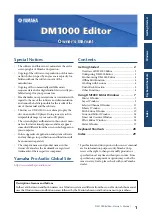
Partition information is stored in the special disk area – the 1st sector of 0
cylinder, 0 head, called
Partition Table
. This sector is called Master Boot Re-
cord, MBR.
The number of primary partitions on a disk is limited, because Partition Table
contains four records itself.
Extended partition supports additional dividing into logical partitions. The
amount of logical partitions is unlimited.
Special programs perform partitioning; usually they can:
•
create a primary partition with a single logical disk;
•
create an extended partition and divide it into logical partitions (disks);
•
set
active partition
(a partition to boot an operating system from).
Typical hard disk partition structure can look like:
MBR
Primary partition 1-1.
System logical disk C:.
Extended partition 1-2.
Logical partition 1-5
Logical disk D:.
Logical disk E:.
Logical disk F:.
…………………………
Usually, initial partitioning is made by means of an operating system. Differ-
ent operating systems offer special programs for this.
After the installation of Windows XP, you can invoke the Control Panel,
whose Disk Management tools will let you delete, create partitions (primary,
extended, logical) using free (unallocated) disk space, or format a partition.
You cannot however change partition structure by means of the Windows
operating system. To do this you will need software such as Acronis
PartitionExpert. Acronis PartitionExpert lets you resize, move, hide partitions,
set them active, copy, and perform other operations
without losing any data
or causing any OS and application workability problems.
Copyright © SWsoft, 2000–2002
69












































